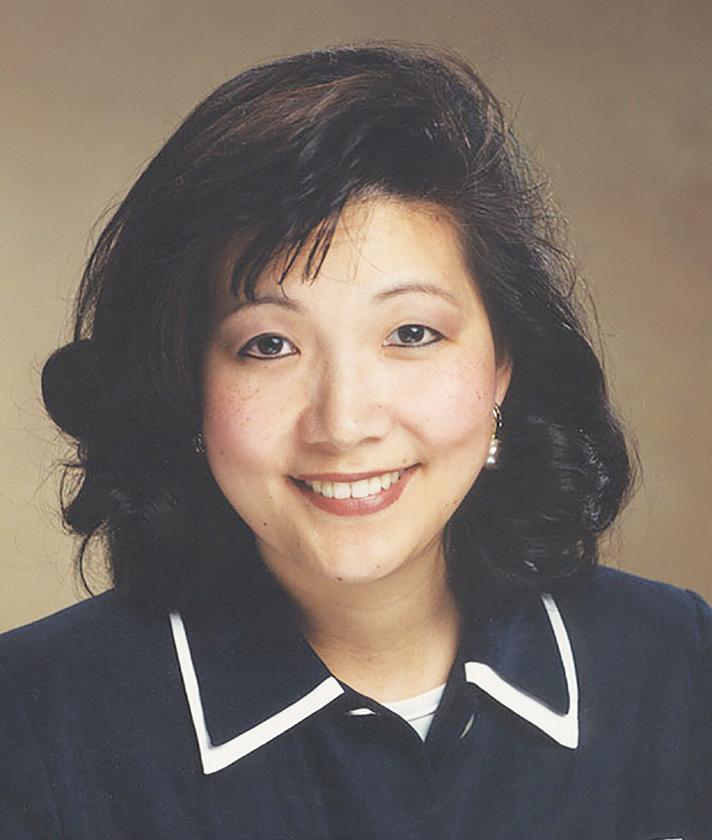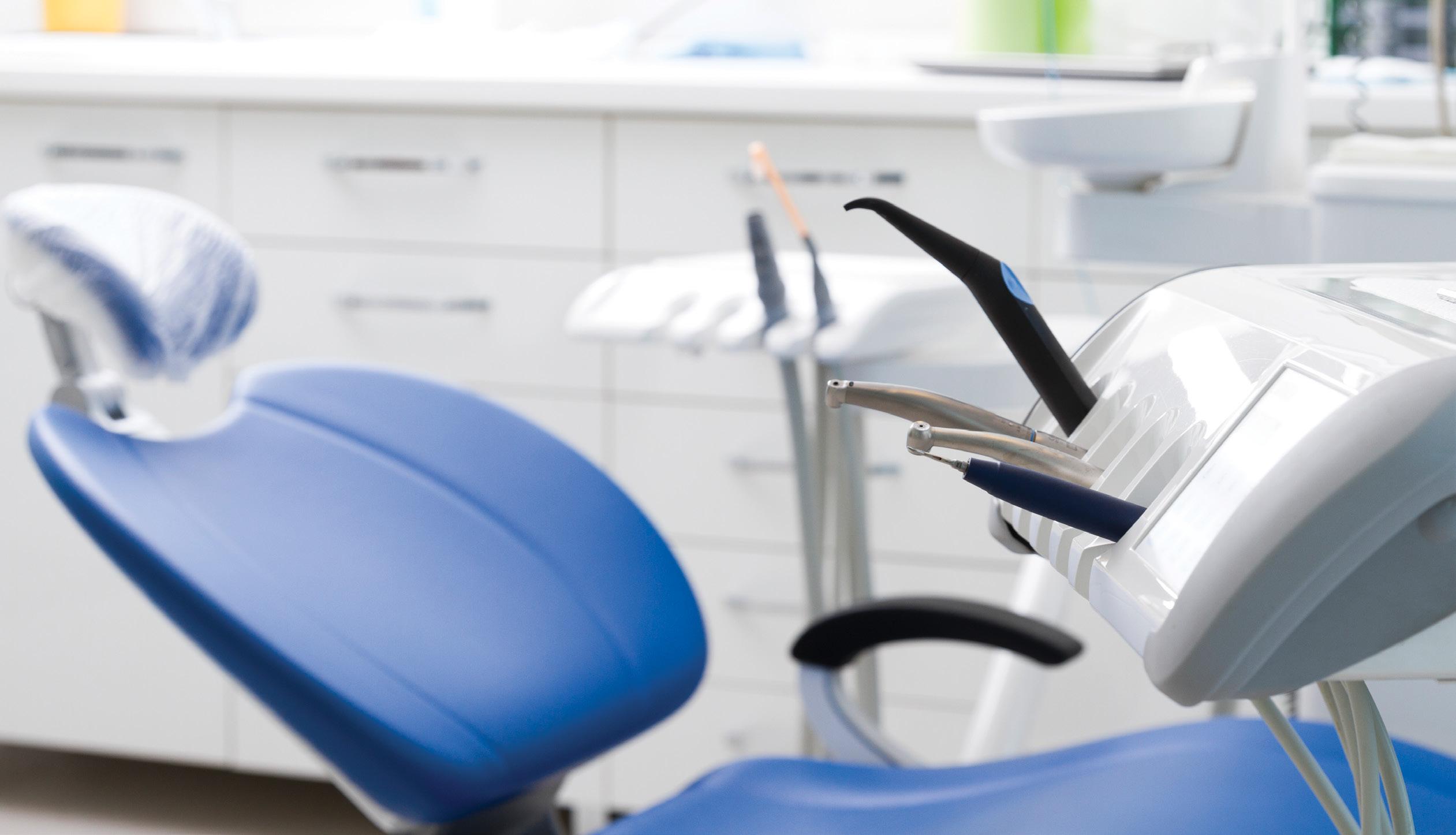
5 minute read
Sleep in the Dental Chair
Sleep in the Dental Chair
Stacey Quo, DDS, MS has made it her passion to help patients who might never know they have a sleep disorder, find rest.
By Wendi Kitsteiner
Sometimes you discover sleep disorders in the most unlikely of places.
Like the orthodontist’s office.
Dr. Stacey Quo began her orthodontic career in 1994 in Palo Alto, California. She found herself interested in sleep medicine after a chance encounter with a patient who had undiagnosed severe obstructive sleep apnea (OSA). That encounter—just four years into her career as an orthodontist—was an adult male patient who was falling asleep during his short, ten-minute appointments.
When Dr. Quo inquired about his sleeping habits, the patient mentioned he was a college professor and would need to nap between his lectures. She referred him to a sleep study and was blown away by the results. “His case is so vivid in my memory because his oxygen saturation dropped to 54% and his Apnea Hypopnea Index (AHI) was 59.6.” AHI refers to the number of abnormal breathing events per hour of sleep. Mild levels are 5 to 14; 15 to 30 is moderate; greater than 30 is severe and this patient was experiencing nearly 60. Because of his dangerously low oxygen level, they stopped the study and placed a CPAP on him for the rest of the night.
MEETING A SLEEP PIONEER
As Dr. Quo moved forward with this patient’s treatment plan, she was fortunate enough to meet Dr. Christian Guilleminault, a French physician and a pioneer in the field of sleep medicine at the Stanford Sleep Clinic. Dr. Guilleminault, who passed away in 2019, is known for coining the term obstructive sleep apnea.
Under Dr. Guilleminault’s mentorship, Dr. Quo learned about sleep physiology. She also began recognizing sleep disorders in her own family. “I am so very grateful for his education, as it allowed me to better help care for my family to improve their longevity and
quality of life. As I treated more cases implementing what I learned, I saw profound changes in patients, and realized another impact the orthodontist has in the patient’s well-being, other than treating their oral health.”
Dr. Quo says that this is a common among professionals. While they are initially seeking help for their patients when they sit through one of her lectures, a secondary benefit is that their own family members are also helped. “Some of their questions relate to things they’ve noticed in their patients, but mostly it’s concerning symptoms or associations they’ve seen in their family.”
TREATING THE CHILD
Dr. Guilleminault was the first physician-scientist to describe pediatric sleep disordered breathing (SDB) back in 1976. “He felt that OSA was a disorder that began in childhood and approached OSA through the lens of early intervention in children to prevent the symptoms and manifestation seen in adults,” Dr. Quo relayed.
Recognizing that these children had certain oral and facial features, Dr. Guilleminault became aware that an orthodontist might be able to help. “He was acutely aware of the orthodontist’s ability to modify facial growth in treating bite problems,” Dr. Quo explained. An orthodontist can help with sleep disorders by expanding skeletal structures to improve airflow during the day and night. Recognizing how valuable the orthodontist is in helping treat SBD, Dr. Guilleminault became the world’s advocate for team collaboration between orthodontists, ENT surgeons, dentists, allergists, lower jaws form one of the walls of myofunctional therapists and oral the throat (pharyngeal airway). The surgeons. pharynx or throat is a susceptible It was actually at Dr. The upper airway is a complex Guilleminault’s urging that Dr. of three distinct but contiguous Quo began treating young children structures: the nose, the mouth and in her office. Her first was a four- the throat, separated anatomically year-old patient. “I cautiously and by the upper jaw/maxilla.”perhaps reluctantly started upper jaw expansion and was surprised She goes on to explain, “When to see a dramatic improvement the nose is congested and nasal in daytime school engagement, breathing is blocked, the mouth acts irritability, as a respiratory anxiety and organ. This temperament. bimodal switching Then I started between nose to widening the mouth breathing lower teeth and and the amount found more of time spent in improvement. each mode affects Now this is the development a therapy of the lower part we routinely of the face: the utilize. And this jaws, the teeth and brought us to the airway. It’s an implementing integrated space, other strategies where chewing, to enlarge the Stacey Quo, DDS, MS swallowing, upper airway by breathing and improving the mode of breathing, speaking are executed. The developing the upper jaw forward musculature governs these functions and improving the performance as directed by voluntary and of the upper airway musculature. involuntary signals from the brain.” We’re using these therapies in adults too.” Dr. Quo is careful to note that Characterizing the face is a routine multiple therapies may be needed part of an orthodontist’s job during and there still may be residual OSA an exam on a patient. The dentist after treatments. and orthodontist therefore play THE SLEEP DISORDER who might not think they have a CONNECTION TO THE problem and would never consider DENTAL CHAIR going to a sleep clinic. “SDB/OSA Dr. Quo explains how dental work prevalence studies suggest a large can walk hand-in-hand with SBD percentage of mild to moderate and OSA. “Structurally, the upper adult sleep apnea is undiagnosed airway comprises the nose and the as patients may not be aware of the throat (pharynx). There is a shared spectrum of associated symptoms.” anatomy as the nose sits inside of site for airway collapse during sleep. a vital role in helping patients the upper jaw and the upper and Dental Chair continued on page 9


Because sleep disorders are so detrimental to a person’s health, these yearly appointments with their dentist or orthodontist can be incredibly helpful to identify facial and oral risk factors. They are becoming “standards of care” in dentistry.
“It’s always surprising and humbling when parents mention that treating the SDB/ OSA has given them their child back, or when adult patients report that treatment has The dentist and been life changing orthodontist play or that they can now breathe, and a vital role in that they didn’t helping patients know they couldn’t breathe–until who might not they could!” consider going to There are other a sleep clinic. options besides CPAP and pharmacotherapy, and it is Dr. Quo’s hope that she can continue to help people who didn’t even know there was a problem, finally benefit from much-deserved rest. .....................................................................
Wendi Kitsteiner is a former high school English and Journalism teacher who has worked as a writer/editor for the RLS Foundation and as an editorial assistant for a cardiovascular researcher at Mayo Clinic. She has written for many magazines and websites and is currently homeschooling her four children on a farm in East Tennessee.









